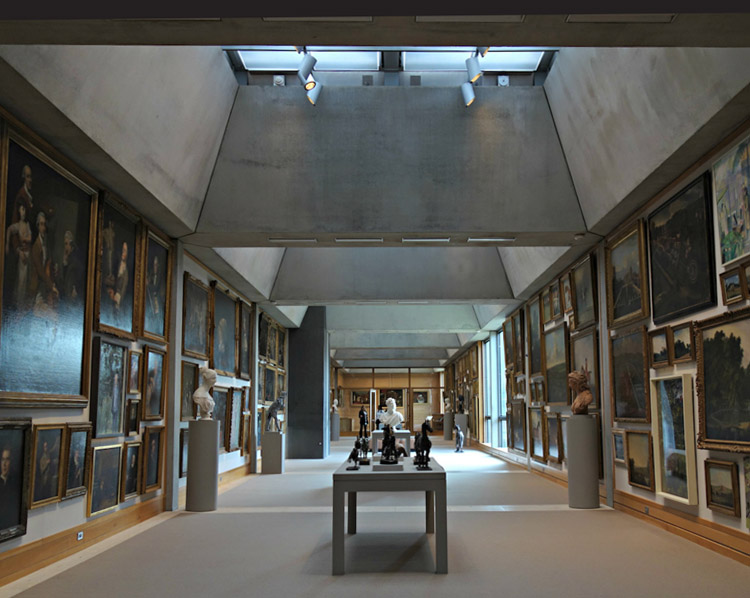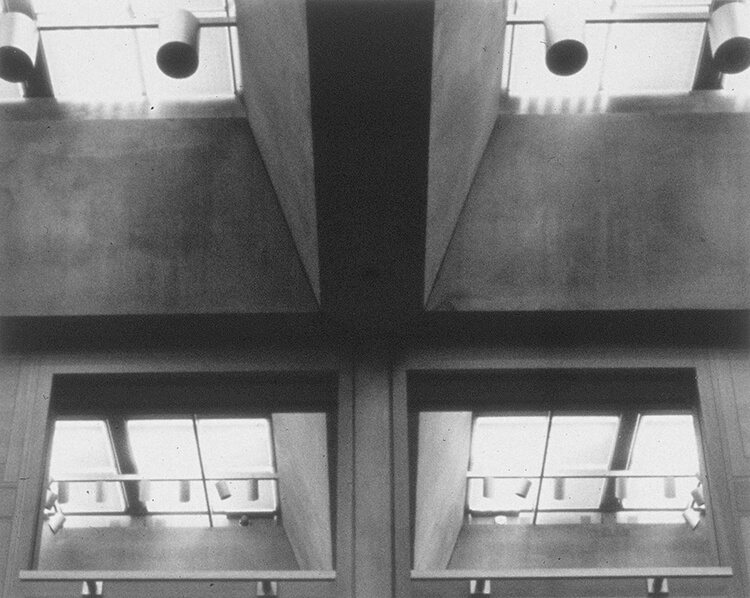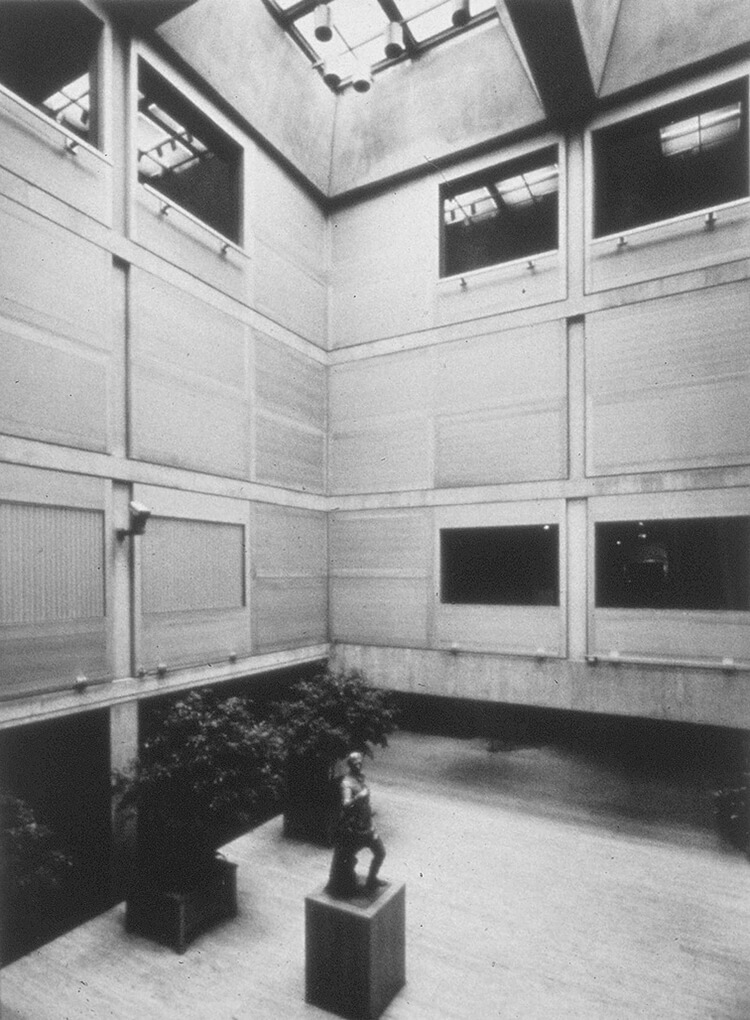YALE CENTER FOR BRITISH ART
New Haven, Connecticut, 1969 – 1974
Architect: Louis I. Kahn
- On a brilliant sunny day we would like to rely solely on natural light to illuminate the pictures; however, we do not want hot spots on the floors and walls.
- On bright but overcast days we would like to rely mostly on natural light for illumination, using little or no artificial light to supplement it.
- For less bright days we would use artificial light, preferably incandescent, to bring the natural illumination up to an acceptable level.
- We desire the option of eliminating all natural light from any gallery skylight.
- We do not want any beam of light to fall directly on the walls or floors.
- The light admitted to the skylight should come through clear glass or plastic, treated only to remove ultraviolet rays.
- We want to be able to sense change in the level of brightness of the sunlight available and do not object to sensing changes in the sun’s position.


The central element of the daylighting design is a rectangular grid of skylight wells which penetrate various levels of the four-story building. Kahn conferred with Kelly on the form of the structural members which support the roof and which determine the skylights’ shape. Like the perforated aluminum in the Kimbell’s natural light fixture, “the deep-slanted, textured concrete surface on the inside of the wells helps soften the contrast between the luminosity of the skylights and surrounding surfaces. Kelly thought some type of inverse shielding might allow the skylights to take advantage of the sun’s elevation. His research led him to believe that north light had a high ultraviolet content which could damage artwork. With the aid of computer calculations run by Isaac Goldbar, Kelly developed what he described as “a kind of unit louver to create a sun shadow pattern on a diffusive material that then becomes the source of daylight for the paintings.” His louver design minimizes north light but transmits some warm-colored south light into the space to attain a full range of color.

View showing different levels.
Kelly’s design for the skylights went through several modifications, including his investigation of motorized shutters. His second design proposal, illustrated by the drawing in this exhibit, had four basic parts. From the top down it consists of:
1) a truncated pyramid shaped exterior louver system;
2) a double dome of acrylic with an ultraviolet coating on the inner dome;
3) a diffuser made from two sheets of prismatic acrylic lenses; and
4) a small four-sectioned hanging baffle.
A full-scale mock-up with movable louvers was constructed to test the complex skylight design. After close study, the hanging baffle placed below the diffuser was eliminated and the diffuser went through several more stages of development involving other consultants. The final design of the interior diffuser utilizes a sandwich of three light-modifying elements. From the top down they are:
1) a sandblasted plastic sheet, to soften light and protect the diffuser sandwich from dust;
2) an eggcrate louver; and
3) two prismatic acrylic lenses.
These last two bottom elements inverted the order of Kelly’s second diffuser design. The hanging baffle that Kelly specified was substituted with a specular one-by-one inch parabolic cube louver, but the two prismatic (pyramid patterned) acrylic lenses from Kelly’s initial design were retained. Below this a lighting track supports a combination of wall washers and narrow beam accent fixtures.
The final skylight design functions as follows: The fixed angles of the exterior louver structure moderate the changing quantity and quality of sunlight. When the sun is low in the sky, the louvers transmit an increased amount of daylight into the building, and a reduced amount when the sun is high. This keeps the illumination levels inside more or less the same throughout the day, as well as throughout the seasons. During periods of insufficient daylight, as in winter, electric light is used as a supplement.
